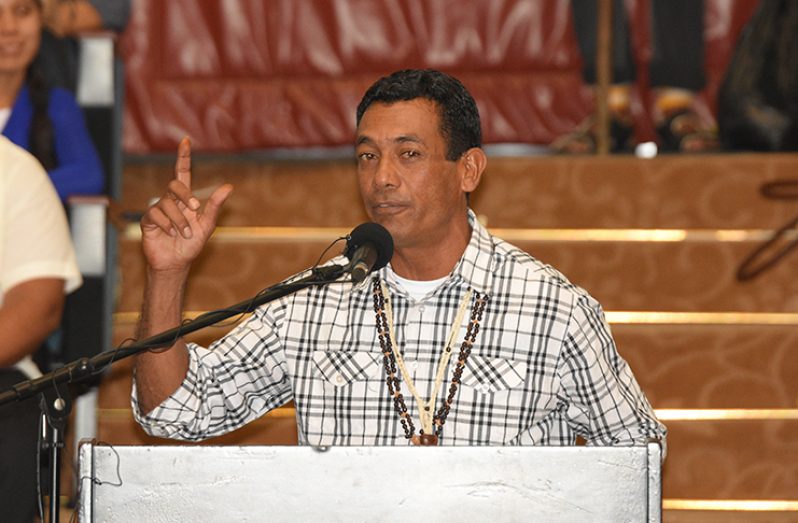IN light of a study that brought awareness to the detection of high levels of mercury in the bodies of villagers at Parabara, South Rupununi, village leaders there are expected to ramp up awareness of the matter.
National Toshaos Council (NTC) Chairman Nicholas Fredericks told the Guyana Chronicle on Friday at the Arthur Chung Convention Centre that there are three mining areas close to the village of Parabara from where it is believed mercury originates.
He said the findings of a study undertaken by the South Rupununi District Council and the World Wildlife Fund (WWF) brought light to the issue recently.
Mercury is used in the gold-mining industry and can be a threat to human health and the environment.
According to the World Health Organisation (WHO), the substance is toxic to human health, posing a particular threat to the development of the child in utero and early in life.
Human beings are expected to have a normal level of 10mg of the substance in their bodies.
In 2010, a study was done in several villages in the country’s hinterland and it focused mainly on pregnant and lactating women.
Methyl mercury, a form of the substance, is of special concern for foetuses, infants and children, because it impairs the development of their brains and nervous systems.
When a woman eats fish contaminated with mercury, it accumulates in her body, requiring several years to excrete. If she becomes pregnant within that time, her foetus will be exposed to methyl mercury in the womb and this will affect the foetus’s growing brain and nervous system.
Fredericks said Parabara does not have a land title, and according to him, the area is affected by three mining areas, including one close to the Guyana /Brazil border and another river which may be one where high levels of chemicals exist in fish.
WORRYING
The tests conducted were on 25- year samples, done at the villages of Shulinab, Crowdar, Aishalton and at Parabara. He said it was discovered that the tests for Parabara indicated that participants there had the highest quantity of mercury in their bodies.
He said the last test was done in June 2017. “So we have that report which we are going to make public very soon, once its completed,” Fredericks said.
He said most likely the mercury is taken up into the area by miners from Georgetown, as he noted that both Guyanese and Brazilian miners operate in the area. He said too that the villagers are now aware of the issue as it is being discussed.
“We didn’t know what the causes of these things were,” Fredericks said, noting that there are children who were born with deformities and he suspects that this may be a direct result of the presence of mercury in the water ways.
“We depend on fish a lot and we eat the big fishes which would be the ones carrying the mercury,” he added.
Fredericks said the village leaders plan to up their awareness campaign, and more importantly, village meetings will be held to determine a way forward in addressing the issue.
The NTC chairman said the issue has not been officially communicated to the Guyana Geology and Mines commission (GGMC), but he noted at a recent Regional Toshaos Conference, the matter was discussed.
Fredericks said the issue requires urgent attention, as he noted that illegal mining may be a contributing factor to the issue. He pointed out that the mines officers should shoulder the blame, since he believes that many corrupt practices occur between the officers and miners in the area.



.jpg)










